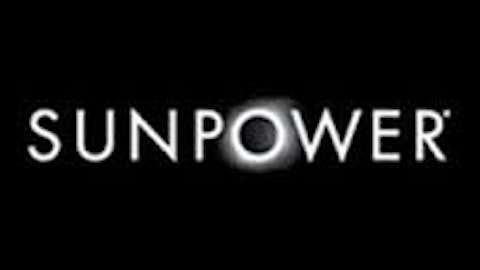Corning Incorporated (NYSE:GLW) is a high-tech company you have never heard of.
Its best known product is called Gorilla Glass, and it is the cover on most of the devices you own. But Gorilla Glass hasn’t given the company the earnings hit you might expect, since devices are relatively small and production runs aren’t terribly long.
Enter Willow Glass, a more flexible, but still strong and scratch-resistant, glass that Corning Incorporated (NYSE:GLW) has been working on for several years now. Willow might be able to do what Gorilla Glass couldn’t do, because it is useful in markets beyond devices.
Where Corning sits
Pre-Willow, Corning Incorporated (NYSE:GLW) is in a stable, albeit profitable place. Sales grew only marginally for 2012 over 2011 levels, to $8 billion, and for the first quarter of the year sales were below that pace – although the second quarter is usually the company’s strongest as device makers line up supplies ahead of their fall production runs.
Corning Incorporated (NYSE:GLW) has a very strong balance sheet for a manufacturer, with almost $6 billion in cash – enough to pay off its long-term debt at any time. The company generates about $3 billion in operating cash flow each year, and while margins have been declining over the last few years, since Gorilla Glass’ debut, the profit margin remains near 25%, again very high for a manufacturer. With a below-market Price/Earnings (PE) multiple of 12.4, plus a dividend presently yielding investors a 2.74% return, this company could be a bargain.
Why Willow
What makes Willow Glass so exciting is its potential use in solar energy. Now it’s true we heard solar energy supplier stories before that didn’t work out, but this one is different.
That’s because Willow Glass’ unique properties make it the perfect coating for thin-film solar systems, both Cadmium Telluride and CIGS, which are where U.S. companies are strongest in this field. Willow Glass is hard enough to provide a long-term solution to the engineering problems of solar shingles, something Dow Chemical has been trying, and failing, to market for a few years now.
First Solar, Inc. (NASDAQ:FSLR) is the biggest maker of Cadmium Telluride solar panels, and the Corning Incorporated (NYSE:GLW) technology may be powerful enough to persuade General Electric it’s time to build that CdT production plant in Colorado it cancelled a few years ago.
First Solar prospects
If any company is poised to benefit from Willow Glass’ application to solar, it’s First Solar.
First Solar, Inc. (NASDAQ:FSLR) has been on a tear recently, up 51% so far this year, on the strength of rising sales and the prospect of profits. The company has made a modest profit for the last three quarters running, and has managed to pay off all but $500 million of its long-term debts, while now having over $1 billion in cash and short term assets.
Despite all this good news, First Solar, Inc. (NASDAQ:FSLR) still trades at a P/E of 9.9, even below that of Corning Incorporated (NYSE:GLW). The main reason is China. Polysilicon makers like Yingli Green can deliver solar panels that cost under 50 cents/watt, and First Solar says it’s two years away from that – its most recent cost/watt cost was 60 cents.
Still, Cadmium Telluride and Willow Glass have a Reese’s Peanut Butter Cup quality to them – they’re two great things that seem made for one another. If a third partner can be found to make and market solar shingles and other lightweight, long-lasting solar products, there could be a winner here. And right now you’d be getting in cheap.
A warning from the past
We have seen this story before, however, and been burned by it.
Five years ago Applied Materials, Inc. (NASDAQ:AMAT), best known for making chip-making equipment, entered the solar market in a big way, since computer chips and polysilicon solar cells share many of the same components. As with Corning Incorporated (NYSE:GLW), the promise was that solar systems would take a lot more material than chips, and the company would prosper.
It didn’t turn out that way. As the company ramped up production, the industry was hit by a fierce price war, driven by Chinese solar cell producers, which eventually drove nearly everyone else out of the market.. Applied Materials, Inc. (NASDAQ:AMAT) shareholders had a stock worth over $19 per share in 2008, but last December the stock was under $10, despite a regular dividend hike to 9 cents/share, meaning the yield at that time was about 3.6%.




